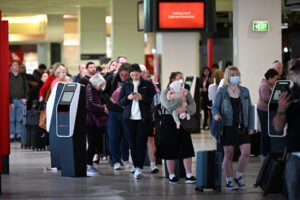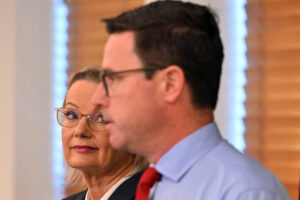Peter Dutton’s best argument for Australia to lower its annual immigration intake is one word: Sydney. Australia’s largest city has been made crowded, slow, expensive and unproductive by decades of unplanned immigration.
[This article was first published in the Australian Financial Review – here]
Anyone planning an event knows that it makes a lot more sense to put the tables and chairs out before the guests arrive lest you bump into people and knock over the vases. And anyone living in Sydney now knows it makes more sense to build light rail, and all of the other infrastructure that millions of people will need, before they arrive rather than after.
Back in 2000 after Sydney spent billions building stadiums that we were told would last for 50 years Australia’s population was 19.1 million. And today there are 24.7 million of us bidding up the prices of the same amount of land. Australia’s population has grown by the equivalent of an entire Sydney since the Sydney Olympics but obviously our infrastructure has not.
It is ironic, or perhaps cynical, that Peter Dutton would now be leading the charge on the need to slow Australia’s population growth given that he, in his role of Immigration Minister, has done so much to conceal the real causes of Australia’s rapid population growth by directing the public’s hostility towards the tiny number of asylum seekers arriving by boat.
Australia’s rate of immigration nearly doubled on John Howard’s watch, but that simple fact was concealed by his “tough stance” on asylum seekers. Indeed, since Howard refused the Tampa the right to dock after it rescued 433 Afghan asylum seekers back in 2001 Australia has welcomed about 3 million [3.1 million] new migrants while resettling fewer than 200,000 refugees. But politicians like Mr Dutton did a great job of hiding the mountain behind the molehill.
Big business loves big population growth because with a population growing by around 2 per cent a year, the fastest in the OECD, customer numbers grow by around 2 per cent a year without even trying. For our big banks, retailers, airlines, telcos and petrol companies high levels of immigration growth mean high levels of profit growth.
Governments love rapid population growth as well as they have come to treat new arrivals more as new taxpayers rather than as new citizens who deserve the level of public services and amenities Australians once took for granted. Put simply, successive governments, state and federal, have used rapid population growth as an opportunity to cut government spending per person while bragging, year after year, about record levels of total spending. It’s a cynical trick, but not nearly as cynical as blaming Australia’s crowded cities on those fleeing the wars we were fighting in Afghanistan and Iraq.
While big business and governments love all the revenue that comes from all those extra wallets entering the country, the Australian community has never been as keen. Not because they are all racist, although some clearly are, but because with long waits to get into hospitals, clogged roads, crowded trains and dwindling amounts of public space they simply couldn’t see the plan to accommodate even more.
But the public’s inability to see the plan doesn’t mean there isn’t one. There is, and it was working a treat until divisions in the Liberal Party shone a spotlight where darkness had been preferred. Rapid population growth without a similarly rapid increase in infrastructure spending delivers better budget outcomes at the expense of worse public services. Rapid population growth delivers better customer numbers without any need to deliver better customer service. And rapid population growth puts downward pressure on wages without the need to train your existing workforce.
There is no right number of people that can live in Australia, but there is a right way to go about increasing that population if governments had any interest in maintaining, or even improving, Australia’s quality of life. If we want to continue to grow by almost 2 million people every five years then we need to start building the infrastructure they will need decades before they arrive, not decades after.
We also need to start using and pricing Australia’s existing infrastructure more efficiently. The trucking industry has avoided paying for the damage it does to our roads for decades. The taxi industry monopoly made too many Australians prefer their own car and it now transpires that the reason that so many container trucks are on Sydney’s roads is that port privatisations included limitations on container ports being built in regional cities. It’s not complicated to fix these problems, but it is more complicated than blaming asylum seekers for our woes.
Richard Denniss is the chief economist for The Australia Institute
AFR Contributor
Between the Lines Newsletter
The biggest stories and the best analysis from the team at the Australia Institute, delivered to your inbox every fortnight.
You might also like
Migration is not out of control and the figures show it is not to blame for the housing crisis
Migration is not to blame for house prices rising. And neither are Australia’s borders out of control.
Is population growth driving the housing crisis? Here’s the reality
Population growth is in the news again. The usual suspects are trying to whip up a scare campaign about immigration. So, let’s look at the actual numbers and put them into context.
Gender parity closer after federal election but “sufficiently assertive” Liberal women are still outnumbered two to one
Now that the dust has settled on the 2025 federal election, what does it mean for the representation of women in Australian parliaments? In short, there has been a significant improvement at the national level. When we last wrote on this topic, the Australian Senate was majority female but only 40% of House of Representatives


